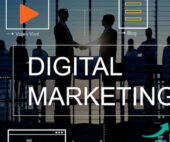Back in 2012, Delightful Communications offered a service called “The Art of leadership branding” to their CEOs. Many people were talking about TRUST at the time. Giant corporations were missing the point by not getting their leaders more visible personally, generating trust and engagement via their brand image, which also helped the corporate brand.
To help other major corporations achieve prominence, they decided to develop a perspective focusing on the strategies and techniques they developed while working as Microsoft’s Digital Marketing Ambassador. As time passed, the sparks steadily increased in intensity.
Precisely What Is The Art Of Leadership Branding?
It is the discipline of discovering and highlighting the professional purpose, what people do, whom they serve, and the value of having them work for clients & employers. The experience that users want other people to have about their knowledge and expertise is both an art and a science. This experience is determined by what individuals share on social media, what shows in search results, and how others find or promote others.
On social media, people can be more transparent about themselves. The professional narrative and what people have to give the world after so many years of expertise are personal because they are unique to people. Remember that authenticity is critical when connecting with the intended audience, just as in advertising and marketing. In the meanwhile, here’s everything people need to know.
With the brand associated with people, the company will gain extra advantages due to the efforts to establish the Leadership Brand. Leadership Branding enables prospective leaders to get to the top of their professions. It provides experienced leaders with a platform from which they can share the lessons and success stories they have learned for the benefit of their peers.
The Art Of Leadership Branding Aspects
Until recently, few executives thought much about using social media for business purposes. Over two-thirds of people still need to publish something on their LinkedIn profiles in the last three months. Since many business executives are reluctant to put their brands on the line, this component of Delightful was only somewhat effective. Then came the year 2020, and everything changed.
As a result, business experts could not meet face-to-face or speak at international conferences since they glued themselves to their computers at home. And they still had something to say. After all, they were still interested in interacting with the people who mattered most to them: customers, partners, workers, and future employees.
When they invented the term “Leadership Branding” to allay executives’ concerns about the word “personal” appearing in the context of personal branding, demand for the services surged. Take a deeper look at what they call the art of leadership branding – what it is and why it matters. And how the company can get the most out of it.
Read on to find out more! By taking charge and beginning to share the expertise and experience that people have spent years creating, the brand is already out there, whether people own it or not.
Improving Your Leadership Image Through Personal Branding
The art of leadership branding solutions includes a question we term the Legacy Question. What do people want the legacy to be when people reflect on their careers? What steps did people take to make the most of the chances presented to people? The “regret gap” was narrowed since people clearly understood what people wanted out of life.
They term the Legacy Question one of the art of leadership branding offerings. What do people want the legacy to be when people reflect on their careers? Did people make the most of the chances that presented themselves to people? The “regret gap” can be closed by discussing one’s career.
Develop The Pillars Of The Art Of Leadership Branding Message
They further recommend that CEOs establish a core set of three to four concepts to build their campaigns. Digital transformation, consumer advocacy, diversity and inclusion, and niche topics like financial sector cooperation are all topics that pique the curiosity of the IT professionals they speak with. It gives focus and guidance to CEOs and top communication managers as they sort through and craft the information they want to engage with prospective audiences.
Analyze The Marketplace
Look at what other industry leaders are doing once people establish this foundation. What do they have to share? To whom are they giving it? When? Are people interested in it? Is there anybody from the company who could invite people to join a panel at an upcoming event? It is a good idea to maintain tabs on the people who work in the business or professional sector to demonstrate that people’s up-to-date and relevant.
Set Aside Some Time To Interact With Others On Social Media
People need to share digital content to get the most out of what people have done so far. If people are busy professionals, establishing a recurring time each week is the ideal option, and we suggest apps like Buffer to help people do this.
Because the Leadership Brand exists, people must commit whether they want it. To reap the total rewards of leadership branding, one must not just share other people’s ideas and content. However, people must also actively interact with the people around them.
Create & Distribute One’s Content
Consider how people can convey their views in a long-form paragraph or a series of videos and how people could inspire others to do the same. According to a study, only 15 percent of decision-makers think the quality of current thought leadership is outstanding.
As a result, there is still much room for great content to be created. The social media platforms and blog are complete with Leadership Branding advice, some of which people discover there and in the book. Here are a few tips to help people get started on the path to making the expertise and experience more discoverable, sharing, and enduring.







